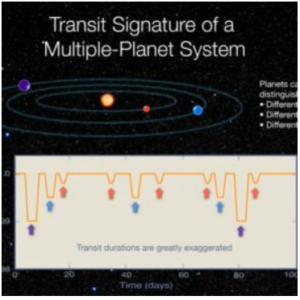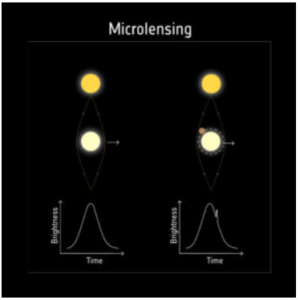Week 2: Different Methods Of Detection
April 7, 2023
Welcome back to my blog! This week I was able to meet with my on-site advisor, Dr. Tanner and her team to finalize the plans for the rest of the project. I will be working with her current exoplanet team of one graduate, one undergraduate, and one high school student to answer a series of research questions revolving around specific planets that have yet to be studied in depth. Later in the week, we all chose potential planets to study. I will be focusing on planet WASP-31 b. There has only been one recorded transit for this planet, so my research will aid in confirming its existence and discovering its properties such as period, mass, and atmospheric conditions.
On the independent research side of things, I watched and studied NASA’s Universe of Learning video series on how to explore, participate in, and contribute to exoplanet science. I learned more about the different types of exoplanet detection such as the radial velocity method, the direct imaging method, transit timing variation, and microlensing. The radial velocity method is also known as the doppler technique and it works well for planets with large masses and short periods. Basically, the planet’s mass will exert a gravitational force on the star causing it to “wobble”. When a star wobbles the wavelengths of light it produces occur at different wavelengths and therefore appear as different colors. Astrophysicists use the varying wavelengths to determine the period of orbit and the mass of the planet. Direct imaging works exactly like it sounds, where scientists take pictures of planets directly. Transit timing variation are used to detect multiple planet systems. In those cases, the transit curve will look like this:

This technique is especially useful for detecting Earth sized exoplanets that would not have otherwise been found. Finally, the microlensing method is used to find planets that orbit stars that we cannot see. Since gravity warps light, large masses such as stars that exist in front of much brighter stars warp the light we receive from the bigger star. This tells scientists that there is a star there. If the light is further warped by a smaller nearby mass, that implies a planet is there. It looks like this:

I also learned about the different types of exoplanets. The biggest one that astrophysicists have found is called HAT P 67 b. It has twice the radius of Jupiter but only 30% of its mass. It very hard to confirm big exoplanets because they can easily be mistaken the smallest types of stars (brown dwarves). The smallest exoplanet discovered is called Kepler-20 b, which is smaller in size than earth and it orbits incredibly close to its star. The most common planets are called super earths and they are about 3 times the earth’s radius. Now here is the astrophysics fact of the week: NASA’s spacesuits cost about 150 million dollars to make. Thank you for reading my blog, and stay tuned for exciting WASP-31 b updates coming next week!
The European Space Agency . (2019). Microlensing . Detecting Exoplanets With Microlensing . Retrieved April 7, 2023, From Https://Www.Esa.Int/ESA_Multimedia/Images/2019/02/Detecting_exoplanets_with_microlensing.
Ford, E. (2020). Transit Signature Of A Multiple-Planet System. Orbital Dynamics Of Planetary Systems. Retrieved April 7, 2023, From Https://Eford.Netlify.App/Project/Dynamics/.
